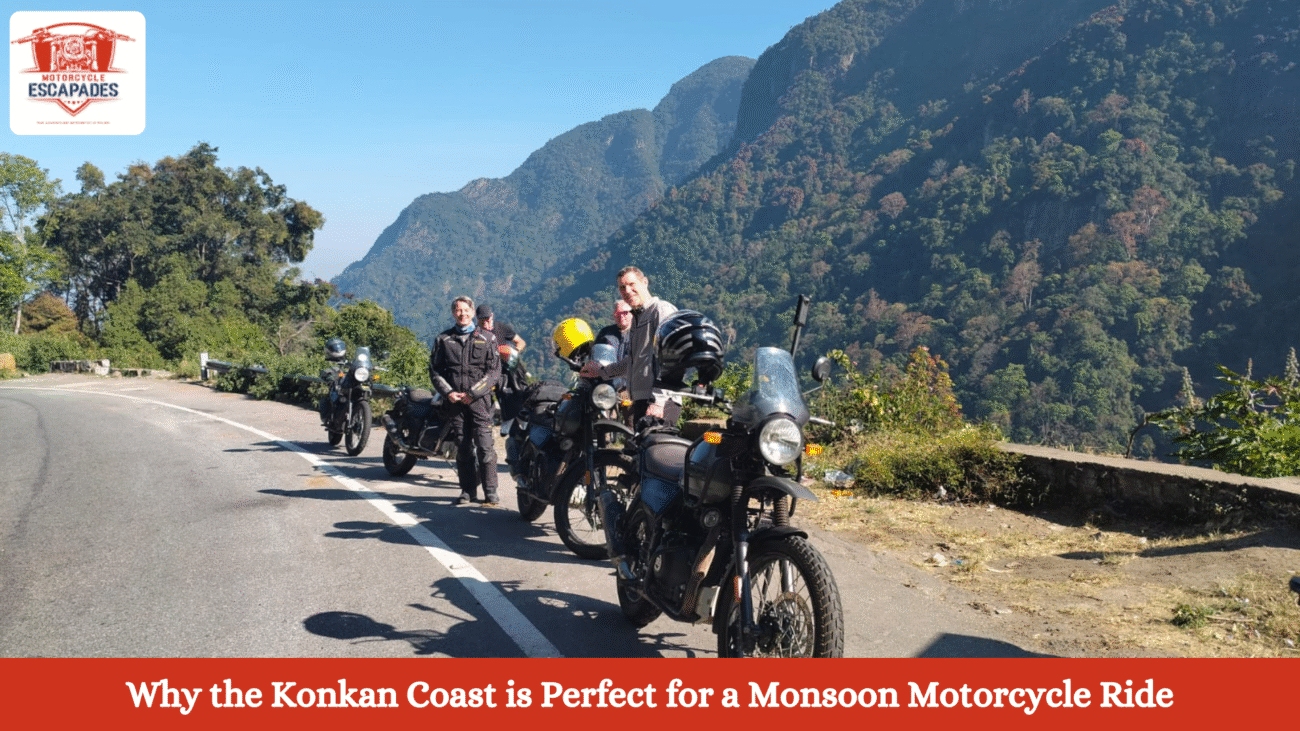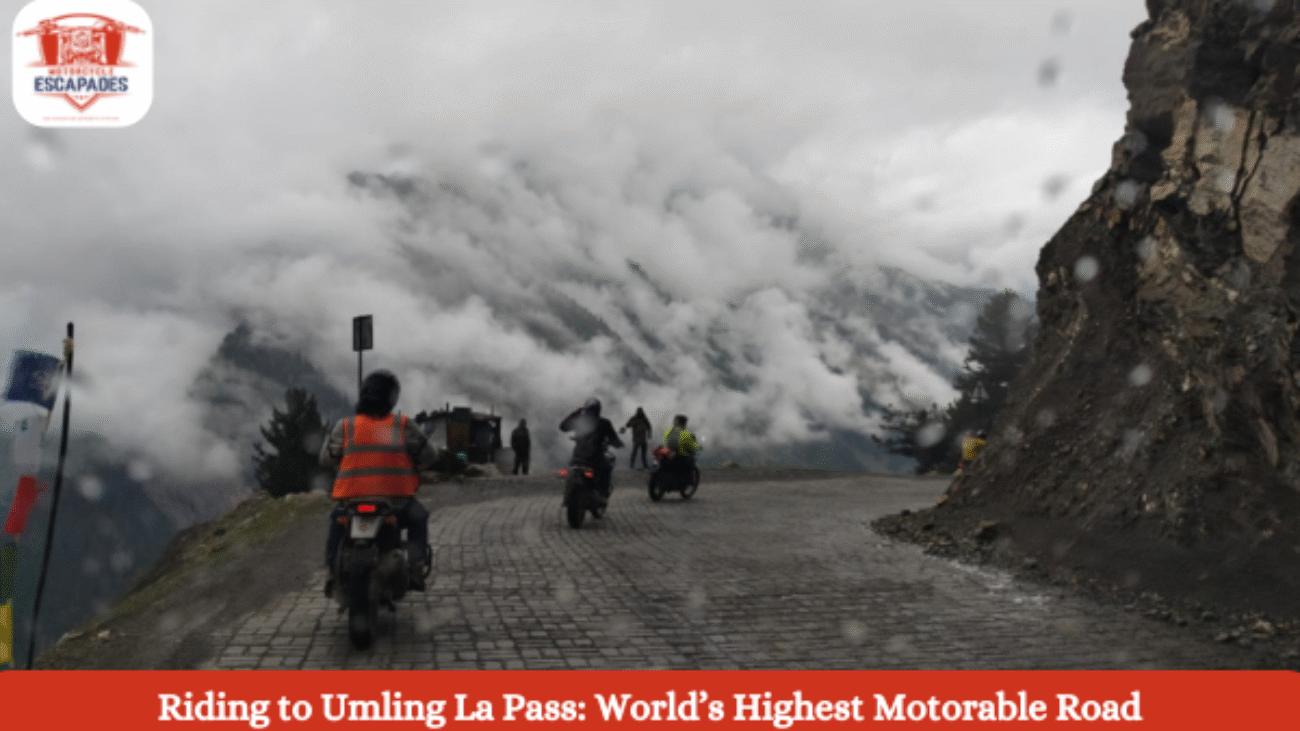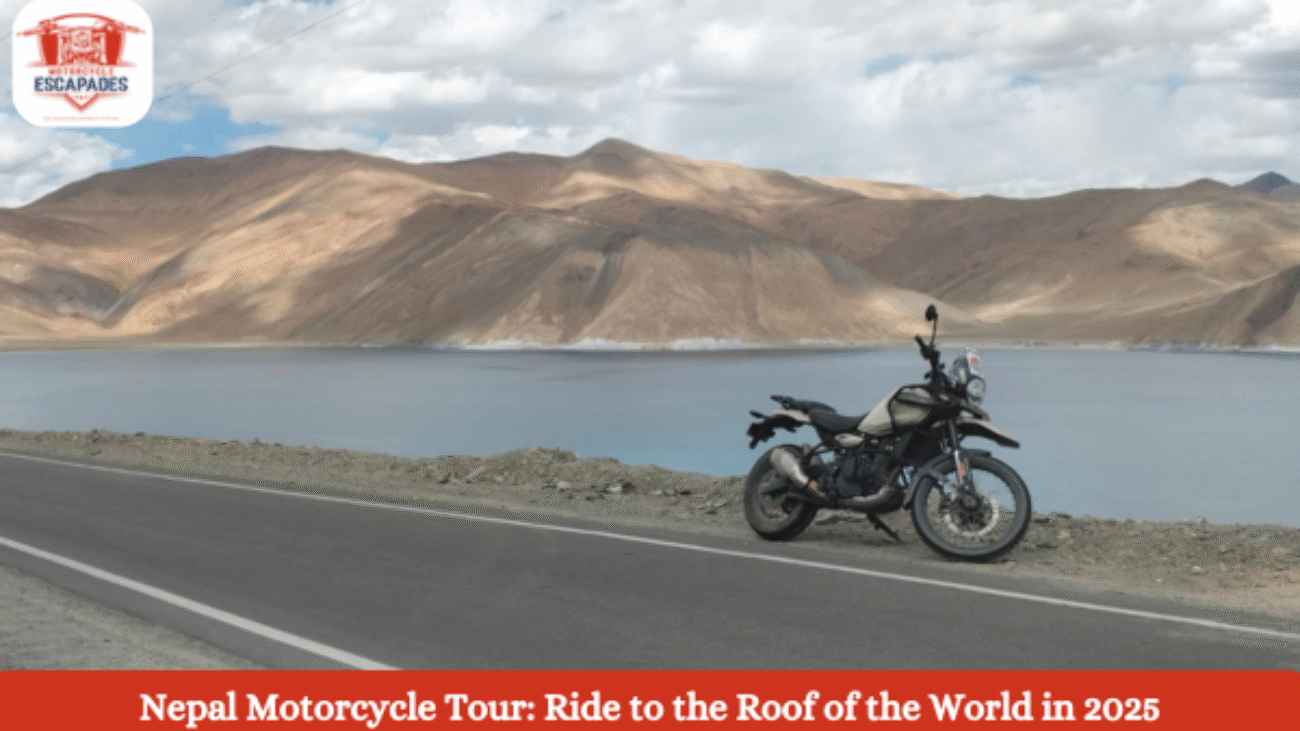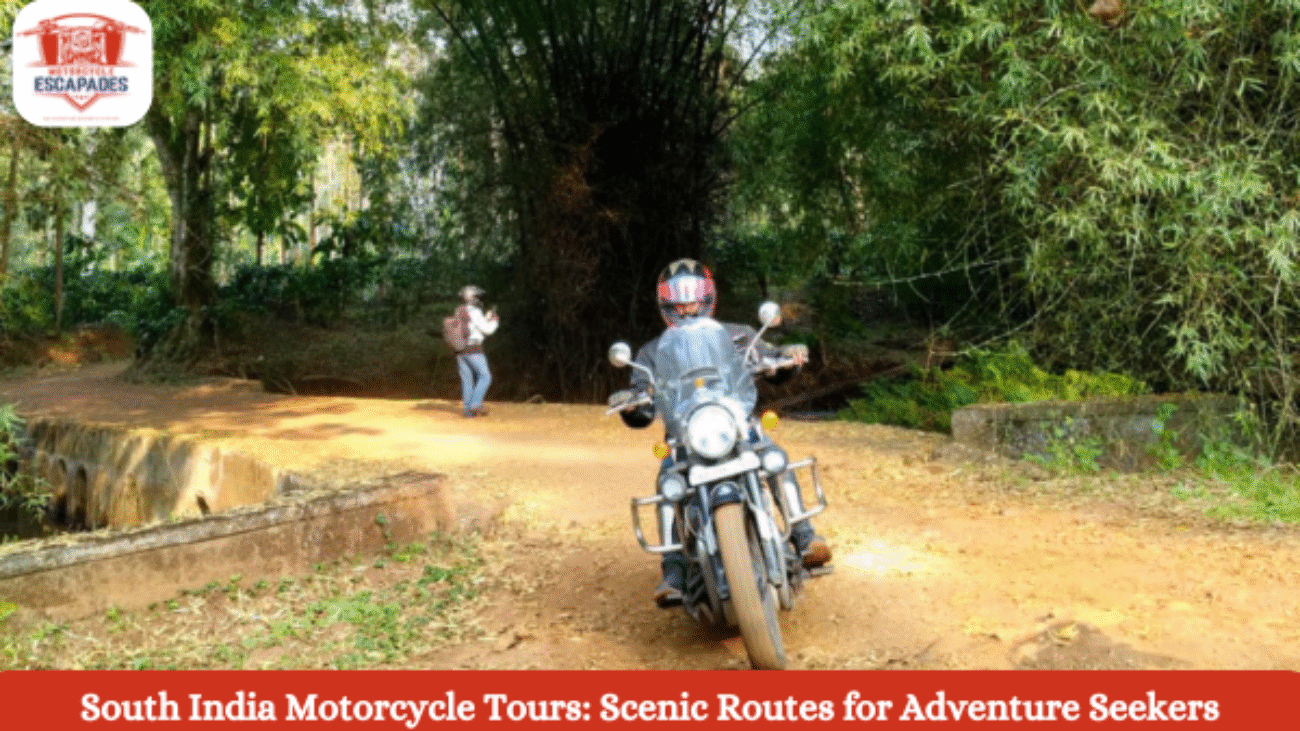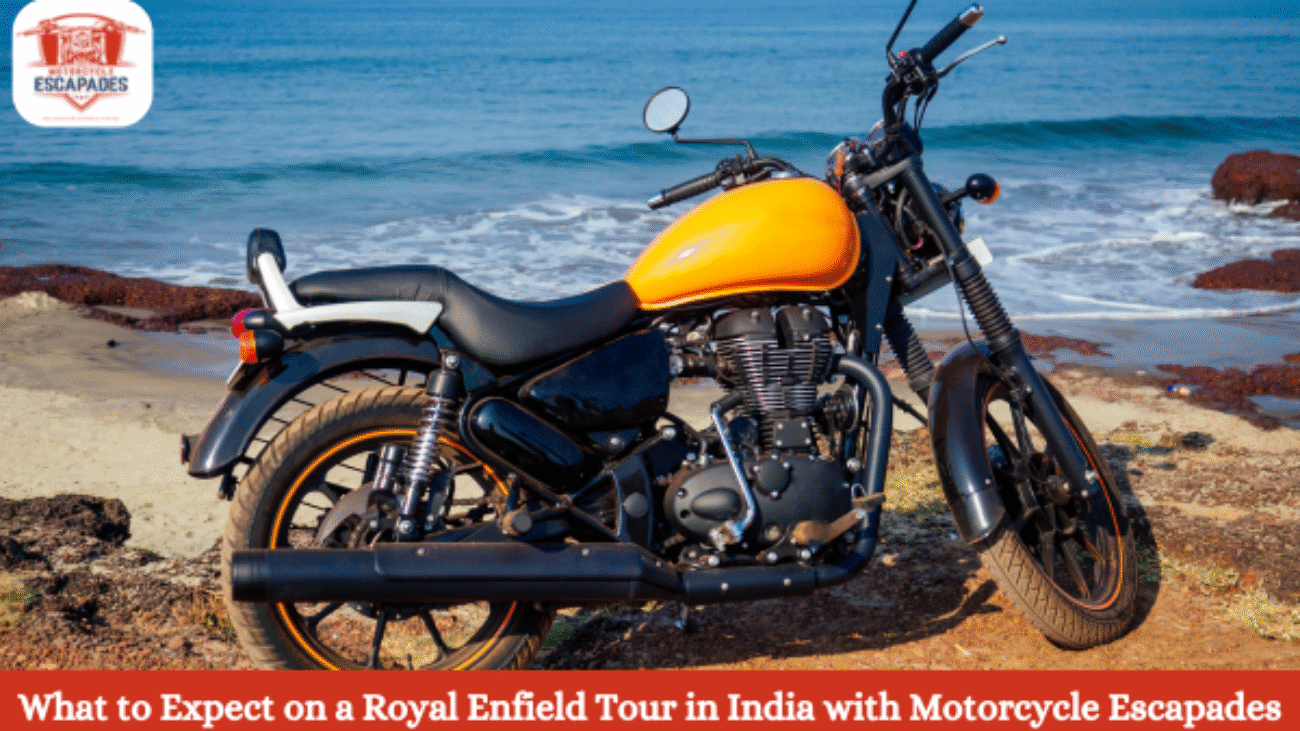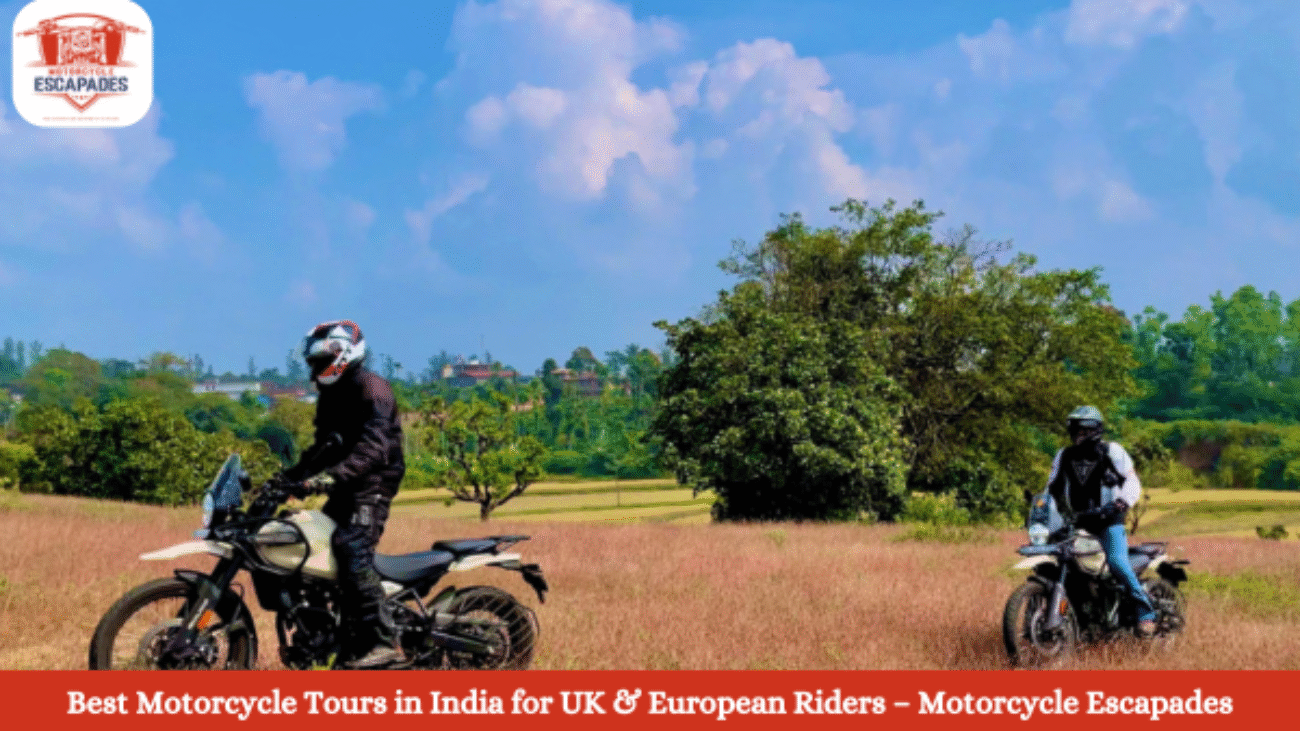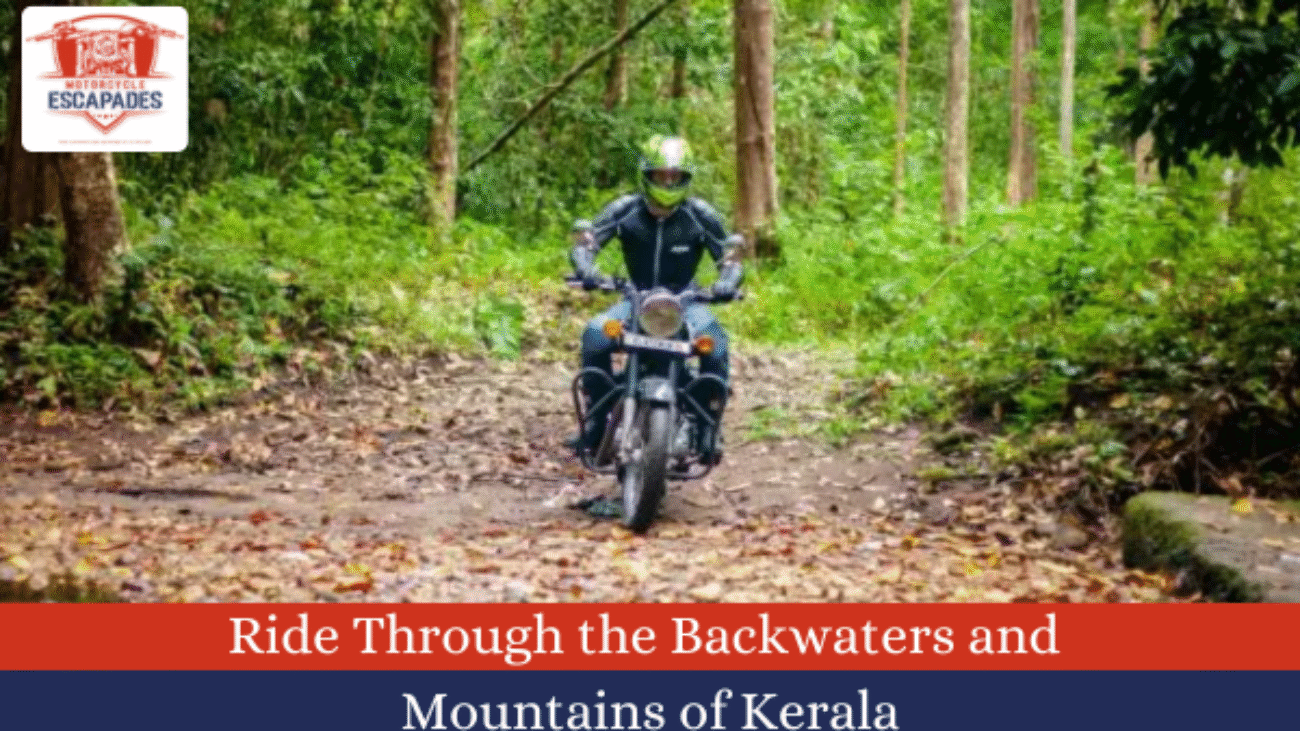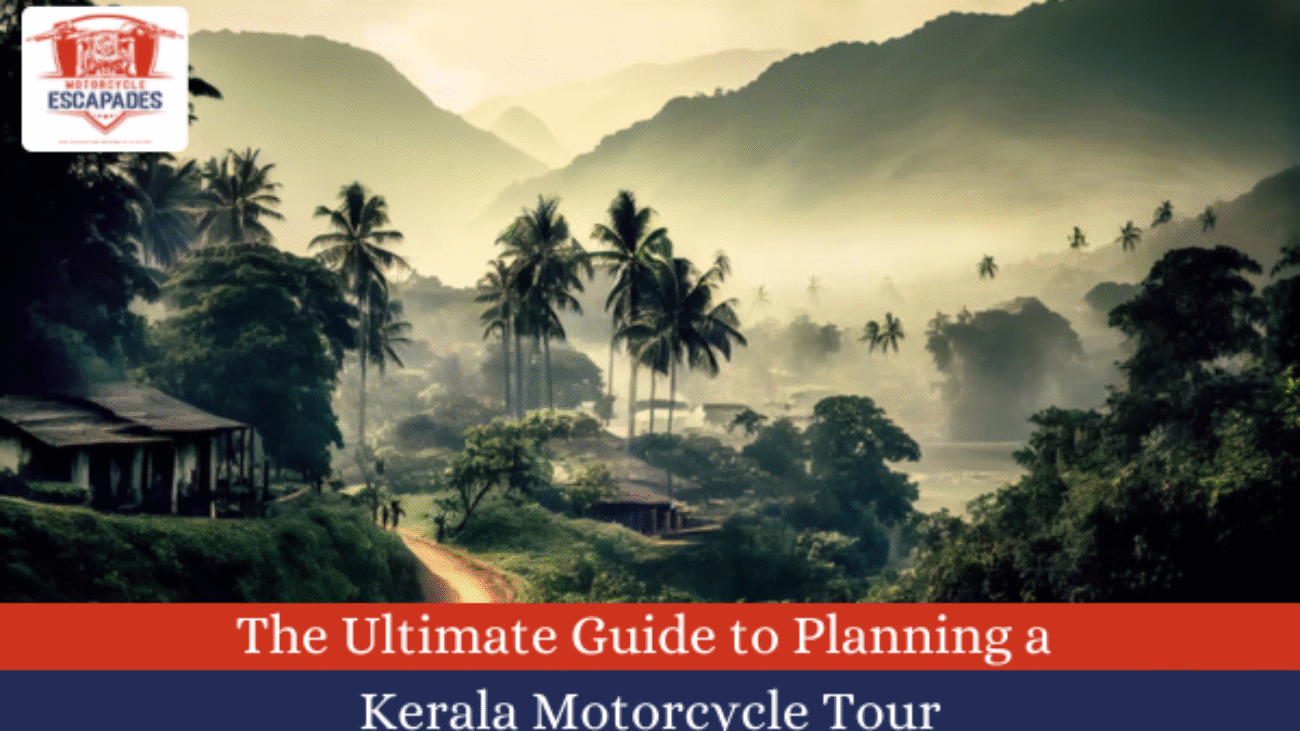If you are a passionate biker who lives for the thrill of open roads, refreshing rains, and breathtaking landscapes, the Konkan Coast is nothing short of paradise during the monsoon season.
Riding to Umling La Pass: World’s Highest Motorable Road
For hardcore bikers and thrill-seekers, riding to Umling La Pass is not just a road trip—it’s a journey to the very edge of possibility. Located at a mind-blowing altitude of 19,024 feet (5,798 meters) in the Ladakh region of India,
Nepal Motorcycle Tour: Ride to the Roof of the World in 2025
Are you craving a motorcycle journey that blends raw adventure, spiritual awakening, and breathtaking Himalayan landscapes? Then the Nepal Motorcycle Tour should be at the top of your bucket list in 2025.
Kerala Motorcycle Tours: Backwaters, Beaches & Bikes with Motorcycle Escapades
If you’re planning an unforgettable journey through South India, Kerala Motorcycle Tours should be at the top of your list. Imagine cruising along tranquil backwaters, winding through lush tea plantations, and riding across golden beaches—all from the seat of a Royal Enfield.
South India Motorcycle Tours: Scenic Routes for Adventure Seekers
At Motorcycle Escapades, we craft unforgettable South India Motorcycle Tours that blend culture, scenic beauty, and pure riding joy. In this guide, we cover everything you need to hit the road with confidence—from top routes and travel tips to logistics and packing.
What to Expect on a Royal Enfield Tour in India with Motorcycle Escapades
What to Expect on a Royal Enfield Tour in India — this comprehensive guide is your go-to resource if you’re planning an adventure with Motorcycle Escapades. We’ll walk you through everything you can expect, from the bike to the terrain, the logistics to the bonding experience. Ready to ride?
Ultimate Guide to Ladakh Motorcycle Tours in 2025: Adventure of a Lifetime
If you’re planning epic two-wheeled journeys in 2025, Ladakh Motorcycle Tours should be at the very top of your bucket list. Packed with dramatic landscapes, roaring Himalayan passes, crystal-clear lakes, and vibrant local culture,
Best Motorcycle Tours in India for UK & European Riders – Motorcycle Escapades
Planning your next big ride? Look no further! Motorcycle Tours in India offer an unforgettable mix of breathtaking landscapes, rich culture, and unique riding experiences. Whether you’re from the UK, Europe, or down under in Australia, Motorcycle Escapades has curated top-notch, guided tours designed just for you….
Ride Through the Backwaters and Mountains of Kerala
Discover: Ride Through the Backwaters and Mountains of Kerala – If you’re a motorcycle enthusiast dreaming of a soul-stirring adventure in India, Kerala should be on the top of your list. Known as “God’s Own Country,” Kerala is a haven of lush landscapes, serene backwaters, and misty mountains — a perfect blend for an unforgettable two-wheeled expedition. Whether you’re from Europe, Australia, or the UK, the diversity Kerala offers can captivate both seasoned and novice riders alike.
Why Choose Kerala for a Motorcycle Tour?
Kerala offers a rare combination of coastal charm and highland thrill, all within a few hundred kilometers. The coastal roads, lush paddy fields, coconut groves, tea plantations, and the Western Ghats provide ever-changing vistas that keep your ride dynamic and inspiring.
With Motorcycle Escapades, you get access to curated routes that avoid commercial chaos and immerse you into authentic Kerala — all while riding a legendary Royal Enfield motorcycle.
Highlights of the Ride
1. Backwaters of Alleppey and Kumarakom
Imagine cruising alongside mirror-like waters lined with palm trees and quaint houseboats. Riding through Alleppey, often dubbed the “Venice of the East,” you’ll experience tranquility that’s unmatched.
- Stop for a quick kayak or canoe ride to explore the narrow backwater channels.
- Enjoy authentic Kerala cuisine at a traditional homestay.
- Visit Kumarakom Bird Sanctuary, a paradise for nature lovers.
Check our detailed guide on Backwater Rides in Kerala (internal link)
2. Munnar and the Western Ghats
From Alleppey, your ride will ascend into the lush hills of Munnar, famous for its sprawling tea estates, waterfalls, and cool climate.
- Navigate thrilling bends and misty trails.
- Visit Eravikulam National Park to spot endangered Nilgiri Tahr.
- Camp under the stars with views of tea gardens and distant hills.
3. Thekkady and Periyar Wildlife Sanctuary
An ideal destination for wildlife enthusiasts. The ride from Munnar to Thekkady is a treat, filled with forest trails and spice plantations.
- Take a guided jungle trek or bamboo rafting adventure.
- Visit a spice plantation to learn about cardamom, pepper, and more.
- Enjoy a traditional Kathakali or Kalaripayattu performance.
4. Varkala and Kovalam Beaches
After a week of mountain adventures, unwind by the Arabian Sea.
- Varkala Cliff offers one of the best sunset views in Kerala.
- Try your hand at surfing or relax with an Ayurvedic massage.
- Wrap up your tour with seafood by the beach.
Best Time to Visit
The ideal riding season in Kerala runs from October to March. The weather is pleasant, the air is crisp in the hills, and the coast remains warm and breezy.
Rider-Friendly Services
Motorcycle Escapades ensures every rider from abroad feels at home:
- English-speaking guides
- Well-maintained Royal Enfield Classic 350/500 bikes
- Safety gear and backup support
- Accommodation in boutique stays and eco-resorts
- Customization options based on rider experience
Travel Tips for International Riders
- Carry an International Driving Permit (IDP).
- Pack lightweight gear and all-weather jackets.
- Learn a few basic Malayalam phrases — locals love the effort!
- Always keep cash for remote areas, though UPI and cards are widely accepted.
Conclusion
Whether you’re an explorer from London, an adventure lover from Berlin, or a rider from Melbourne, Kerala welcomes you with open arms and winding roads. This tour isn’t just about riding; it’s about experiencing a culture, soaking in nature, and returning with stories you’ll tell for a lifetime.
Book your Kerala ride now with Motorcycle Escapades and discover a side of India you’ve never seen.
The Ultimate Guide to Planning a Kerala Motorcycle Tour
If you’re a motorcycle enthusiast based in Europe, Australia, or the UK and dreaming of a truly immersive travel experience, Kerala motorcycle tours should be at the top of your bucket list. Known as “God’s Own Country,” Kerala offers a perfect blend of tropical landscapes, coastal roads, cultural richness, and tranquil backwaters — all of which are best explored on two wheels. In this guide, we’ll cover everything you need to know to plan the ultimate motorcycle tour in Kerala, whether you’re riding solo or joining a guided group.
Why Choose Kerala for a Motorcycle Tour?
Kerala is a paradise for riders. From the lush Western Ghats to the breezy Arabian Sea coastlines, every turn of the throttle reveals new natural beauty. Unlike the arid roads of Ladakh or the harsh terrain of Spiti, Kerala offers mild weather, curvy mountain roads, and charming villages to explore at a relaxed pace.
Best Time to Visit Kerala for a Motorcycle Trip
The ideal time to plan your Kerala motorcycle tour is from October to March. During these months, the weather is cooler and perfect for riding. Monsoon months (June to September) should be avoided unless you’re an experienced rider looking for a unique adventure.
Popular Motorcycle Routes in Kerala
Here are some breathtaking motorcycle circuits you should consider:
- Kochi to Munnar – Ride through winding roads into the tea-scented hills of Munnar.
- Munnar to Thekkady – Pass through thick forests and spice plantations.
- Thekkady to Alleppey – Enjoy lush green surroundings and stop for a houseboat ride.
- Alleppey to Varkala – Coastal route perfect for beach lovers.
- Varkala to Trivandrum – A relaxed ride to Kerala’s capital city.
You can explore all of these as part of a guided motorcycle tour offered by Motorcycle Escapades, our experienced travel brand known for curating unforgettable experiences across South Asia.
What Bikes Are Best for the Terrain?
Kerala’s terrain is a mix of hilly landscapes, city roads, and coastal highways. We recommend:
- Royal Enfield Himalayan – Best for off-road and mountain segments
- Royal Enfield Classic 350/500 – Ideal for smooth, long-distance travel
These bikes are available for rent with Motorcycle Escapades, fully serviced and road-ready.
Essential Things to Pack
- Riding Gear: Helmet, riding gloves, armored jacket, and riding boots
- Light cotton clothing for humid weather
- Rain protection (October-November can have unexpected showers)
- Power bank, mobile holder, and a local SIM card
- First aid kit and necessary medications
Accommodations on the Way
Kerala is known for its eco-resorts, homestays, and luxury backwater villas. Motorcycle Escapades offers handpicked stays that provide both comfort and authentic local experiences. You can check our curated rider-friendly accommodations on our Kerala tour page.
Cultural Tips and Local Experiences
- Respect the local customs and dress modestly, especially at religious sites
- Don’t miss a Kathakali performance or Kalaripayattu show
- Taste the authentic Kerala cuisine, including fish curry, appam, and coconut-based dishes
Benefits of a Guided Motorcycle Tour in Kerala
While solo travel is always adventurous, a guided tour ensures:
- A pre-planned itinerary that covers the best spots
- 24/7 support vehicle for any breakdowns or emergencies
- Local guide who understands the language and culture
- Interaction with fellow riders from around the world
Motorcycle Escapades offers custom and group Kerala motorcycle tours that provide a seamless experience from start to finish. Learn more about our Kerala bike tours designed specifically for international travelers.
Final Thoughts
Exploring Kerala by motorcycle is more than just a holiday — it’s a soulful journey through palm-lined roads, tea plantations, and tranquil waters. Whether you’re from the UK, Australia, or Europe, Motorcycle Escapades ensures that your Kerala adventure is both exciting and stress-free.
Ready to ride? Book your Kerala motorcycle tour now and experience the magic of South India like never before.

